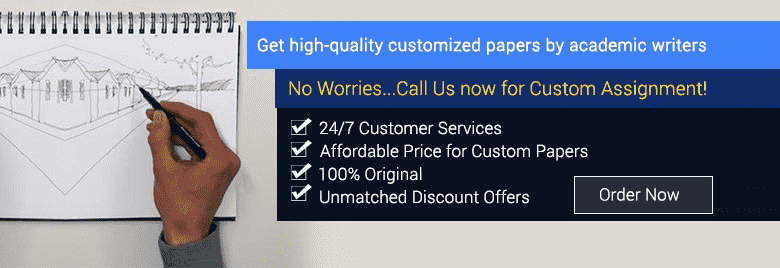Some main assessment is give as under:
- Make and effective analysis of two companies
- Provide strategies for implementing and managing the competition firms and their working.
- Elaborate the future challenges and working strategy
- Provide recommendations to improve strategies
INTRODUCTION
Strategic management is vital for proper utilisation of organisational assets through suitable guideline and approaches so that business goals can be achieved. The use of appropriate strategies in business operations can help organisations to overcome various challenges in the business and to sustain their leading position among other competitive companies. The strategic management not only gives better productivity but it also makes the operational process more effective in terms of cost, risk minimization and resource utilisation (Rothaermel, 2015). The report will evaluate the impact and role of these strategic advantages by analysing the performance and strategies of two state owned public transport organisations.
SNCF and RATP group are well recognised and dominant organisations which are providing their services in France. SNCF provide rail services and manages the high speed railway network in the country. On the other hand RATP group covers wider range and serves transportation services such as tram, Paris metro and bus facilities. With these services both of these organisations have achieved success and recognition as publicly traded organisations. The report will analyse the strategies of both of these organisations and popular trends in consumer service industry. It will also compare the strategies used by both of the above quoted organisations and future challenges for the specified industry. The document will provide recommendations so that these organisations can improve their business strategies.
Analysis of Consumer Service Industry in Public Transportation Sector
RATP and SNCF both organisations are consumer service organisations thus their strategies aims at maximising profits by delivering the high quality and required services to their customers. The technology and developments in conveyance services has made it very easy for people to fulfil their mobility requirements. However, the economic factors and resource limitations makes it impossible for every individual in society to have their own vehicle. Either from sharing point of view in family or for long journey's people used to prefer public transport services. These services are not only cost effective but are also more convenient for long distance journey (Brodie, Benson-Rea and Medlin, 2017). For distant locations these are often considered as safe due to accumulation of groups.
Apart from the cost benefits and security aspects another factor has given rise to need and success of public transport industries like RATP and SNCF is the environment sustainability. If every member in society uses individual vehicles then, the green house emission from them is polluting environment. Thus, there is an urgent and regular demand from the concern authorities and environmentalist to use these public mode of transport so that environment damage can be minimized. Hence, government and state authorities are developing strategies and frameworks so that use of these services can be increased and expanded to every corner of the city.
It will be beneficial for the climate as well as for the people who have limited resources. For instance every individual cannot have its own chopper or ship. Thus, there is need for a rail network or metro to meet the requirements. One of the key concern of this industry is to ensure the safety with comfort. The regulating authorities ensures that these services are expanded to every possible corner of the nation and people can use these services without any fear or discomfort (Fukuda, 2018). Security being the biggest challenge for organisations in this industry the innovative services in tours and travel such as low cost airline services and private vehicles at low cost are providing great challenge to these public transportations. With emerging cost efficient airline services, time restrictions, safety and privacy concerns and sustainable vehicles many of the people avoid these public services.
Business Strategies used by RATP
The key strategic framework followed by RATP helps organisation to develop its execution plan by considering three different areas which are city and environment, consumers and its employees. The innovation and development strategies of the organisation are based upon the concept of sustainability. In procurement process as well RATP ensures that its suppliers and other stakeholders participates in the corporate social responsibility (CSR) of organisation. The strategies of RATP are framed with principle that public transport is the key measure to bring sustainability in business practices (Facing the challenges of new urban mobility, 2018).
Thus, company regularly update its strategies so that it can fully contribute towards is CSR and social responsibility. However, being a consumer service provider customers are the prime responsibility and priority of the organisation. RATP strategies ensure that the customers can easily connect and interact with the organisation. The organisation aims at delivering services with operational excellence so that safe and secure mobility services can be delivered to the customers (West, Ford and Ibrahim, 2015). Strict security control and monitoring at the rail network of RATP assures that the safety of its valuable consumers is not compromised. This consumer based strategies are the key factor which makes organisation trustworthy.
Human assets are the integral factors which leads to the success of organisations. RATP understand this fact very well and thus strategic management of its human resources is also one of the crucial element for its success. To deliver the qualitative services to customers RATP includes training sessions, attractive bonus, skill development programs, effective leaderships and equal opportunities so that the skilled and effective employees are part of the company and their knowledge can be used to achieve the performance and profitability related goals (The RATP manages its customer service with E-Deal CRM, 2018).
Apart from these basic and long term strategic plans in context to various operational and functional challenges RATP is giving priorities to strategies such as operational excellence, innovations so that it can deal and successfully overcome the emerging market competition and to expand its public transport services to different parts of world and in smart urban cities of France so that its long terms gaols can be achieved (Facing the challenges of new urban mobility, 2018). With the expansion proposals one of the strategic priority of the group is to promote its partnership with smart cities so that it can effectively meet is CSR.
The strategic excellence in marketing has helped organisation to attain its profitability goals. Its marketing strategies are developed with the aim to increase average revenue per user, improving brand and customer relations and to sustain its effectiveness among other competitors such as SNCF. To improve performance excellence and CSR performance RATP is working on RATP BUS strategy 2025 which aims at providing bus facilities which are made up of 100% green fleet and operates on natural gas or electricity to reduce the pollution (The RATP 2025 Bus strategy, 2014). For routine operational activities also company is following sustainable strategies like use of customer relation software so that use of paper can be minimized and data can be managed more effectively and quickly.
Strategies of SNCF
The organisation aims at making its rail services best in the world and to bring high speed rail network which can also be compatible with the environmental concerns. The organisation is well known for its high speed rail network program (TGV). The highest speed and safety standards have given recognition to company in different parts of the world (SNCF outlines TGV growth strategies, 2009). Along with its regular improvement in service parameters the safety and quality standards are followed to an extreme extent that till now the organisation has not experienced any accident during its operation. The key strategic issues of SNCF are expansion of its services to global level and to regularly bring advancements in its services.
The completion of the extension of TGV network in Paris region and making high speed services accessible to all suburban areas is the prime goal in its strategic development plan. Safety and renovation of the existing rail network are the topmost concerns of the organisation which are managed by several innovative strategies. SNCF has used advanced techniques to modernise its techniques used in operational activities such as monitoring of railway tracks, use of drones and new maintenance methods. The security is the biggest concern of the people in rail network. Due to high investment cost and probability of extreme damages in case of errors this security and advancements are always the strategic part of the organisation (SNCF and partners join forces to develop driverless trains by 2023, 2018 ).
For the year 2020 the strategic plan of SNCF provide guidelines and business approaches to achieve the aim of establishing a benchmark in terms of quality and safety in area of logistic and mobility services. From financial and consumer perspective the organisation's strategy is to increase its revenues and to satisfy every stakeholders associated with SNCF. The growth and development strategies of SNCF are not limited to only rail network or public transport. For achieving the business goals company is also exploring diversification strategy. For example SNCF immobilier aims at brining urban transformation and provides better living facilities in urban regions of France.
Similarly, SNCF logistics provides complete solutions for logistic using rail network as well. The subunit of SNCF, Keolis provides the transport chain through multi-mode choices such as bicycles, sharing of cars, subway system and river shuttles. To increase the participation of consumers and profits SNCF also used TGV split strategy (How the SNCF implemented its new digital strategy with oui.sncf, 2018). As per this the services in high speed train were divided into two categories: low cost services without frill and high cost services with Wi-Fi and more effective customer relationship methods. The advanced technical and operational strategies used by the organisation provides services such as flexible ticket system, seat selection facilities and online booking systems to provide more convenience to its customers. Brand extension and management strategies through continuous innovation are the success promoting strategies for SNCF.
Implementation and Comparison of Strategies by Both Organisations
SNCF and RATP both of the companies are using effective strategies as per their long term business goals. From the above discussion it is analysed that the marketing and customer management strategies of SFCN are more effective than that of RATP. SFCN use tools such as 360 degree feedback, freight car coupons, vehicle sharing and personalised services such as bicycles which are influencing all types of customers. The people who prefer full public transport as well as those who prefer personalised format both can find services within SFCN (New strategy for tgv still “well below budget”, 2018).
However, RATP is not providing any such facilities and thus for some people it may become difficult to find any service option. RATP implement its strategies with the aim to strong its roots in its native region which is France with second priority to global audience (The RATP 2025 Bus strategy, 2014). It is helping organisation to strong its position in market which will give it benefits in future growth. On the other hand the multiple number of innovations with large operating units can make it challenging for SFCN to assure the quality perspective of the products and services (Csr report, 2018). In the operational strategies of RATP it is analysed that most of the innovations are in context of sustainability while the innovation of SFCN are in reference to improving quality of services.
The safety regulations and comfortable transport services are important aspect of operational requirements of both the companies. However, the involvement of consumers and other stakeholders in strategies and framework used by the organisation is minimum. The business groups can improve their performance by encouraging more people in theirs strategic development process. SFCN is effectively using the concept of service and product diversification so that it can increase its revenue. On the other hand RATP is strictly focused on the one type of services. To lead the market RATP can also diversify its products or market segments so that it can also achieve its long term goals.
Future Challenges
The biggest challenge for all business organisations is to meet the need of sustainability so that not only their business process but environment can also survive. The challenge is effectively managed by both the organisations. SNCF is regularly making improvements in its operational activities so that it can meet its CSR goals. For instance the small measures such as noise reduction in high speed trains, treatment of storm and waste water are helping organisation to meet its CSR (The French Railway Green Bond Programme Climate Bond Framework, 2015).
RATP is also making rapid improvements in its manufacturing and operational strategies so that it can fulfil its corporate social responsibility. The use of digital systems and technology, natural gas, modern trains and other technical improvements are making their operational activities more sustainable. The future in transportation industry may observe the increment in low cost electrical vehicle which may attract people. Currently both the organisations are not making any attempts to retain their consumers from this future threats. However, efforts of SNCF such as car and ride sharing and 360 degree feedback and interaction with consumers can be considered as the excellent approach to retain consumers and to attract new customers as well (New strategy for tgv still “well below budget”, 2018).
The increasing dependency on technology in public transportation services is also encouraging more vulnerabilities which may lead to technical failure. RATP and SNCF both organisation are paying less attention to risk management. For instance RATP has key objective to bring more sustainability in urban development while SNCF aims at exploring international market. However, both companies do not have any risk management strategy which clearly specify the approach which can be used by them in case of failures. Many public transport service providers are also providing personalised services (Sncf presents new strategic vision “excellence 2020”, 2013). This concept can achieve huge success in near future thus both companies must also deal with these advancements.
With the globalisation there are vast job and growth opportunities thus employee satisfaction and retention of the skilled employee can be challenging which must be managed to ensure the continuity of the operations. The international exposure can lead to dissatisfaction results because it is not certain that in every economy there will be skilled resources who will be able to manage these innovations and advancements. Thus, performance degradation in one economy can affect overall brand image. RATP and SNCF must prepare themselves for global competition as well as threats of globalisation (Our strategy, 2015).
If you are looking for the Best Assignment Help in Gippsland, then you must visit us at Assignment Help Gippsland and get your assignment done by experts.
Recommendations
The strategies adopted by both organisations mentioned above are having qualitative strategic management approach but certain improvements can help them to achieve their business goals with more effectiveness.
Recommendations for SNCF: The organisation is effectively using innovations in its practices for improvement and growth. The diversification of its product and services is also helping SNCF to increase the range of its target audience. However, it is analysed that the major strategic focus of the company is on exploring to different parts of the world. The organisation can improve its performance by putting more emphasis on customer relationship management. Different culture and nations of the world have different requirements and needs and thus SNCF cannot apply the same growth model to all countries (Sncf presents new strategic vision “excellence 2020”, 2013). The current growth approach is effective for reaching revenue targets but the existing measures towards sustainability needs more efforts. The increasing concentration towards sustainability will be beneficial for the future.
Recommendations for RATP: The sustainability efforts of RATP are remarkable but its marketing and customer relation strategies seems to be less effective. Online booking system of the organisation is less supporting and provide mobile application support on all devices. Though social media presence of the organisation enables its users to easily connect with the organisation but strategies such as feedback from consumers, employee motivation, loyalty rewards and discount coupons, can be helpful for the company in sustaining its position in the market from emerging competitors (Rothaermel, 2015).
CONCLUSION
From the report it can be concluded that strategic management is essential for achieving the long term business goals. The ineffective implementation and analysis of business strategies can affect the overall performance and output of the organisations. The report has discussed the strategies used by two different organisations in the same industry type. It has been analysed from the report that the strategic guidelines affect the future scope of the companies and these strategic differences laid the foundation of the goal achievements in business.
The document has also evaluated the future challenges which can bring changes to existing organisational strategies and performance. It can also be concluded from the report that organisational strategies are affected by several factors such as marketing environment, future goals and requirements of target audience. Thus, business groups must identify these needs and adopt suitable strategies for their functional and operational activities.
People also visit on -
Difference between Management and Financial Accounting - EverJoy Enterprises
Pestle Analysis Of JD Sports Fashion PLC
Management and Operations of IKEA
Impact of Changes in Strategies and Operations - Thomas Cook and Cosmos Tour














